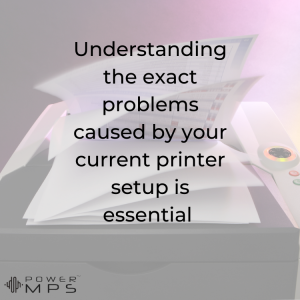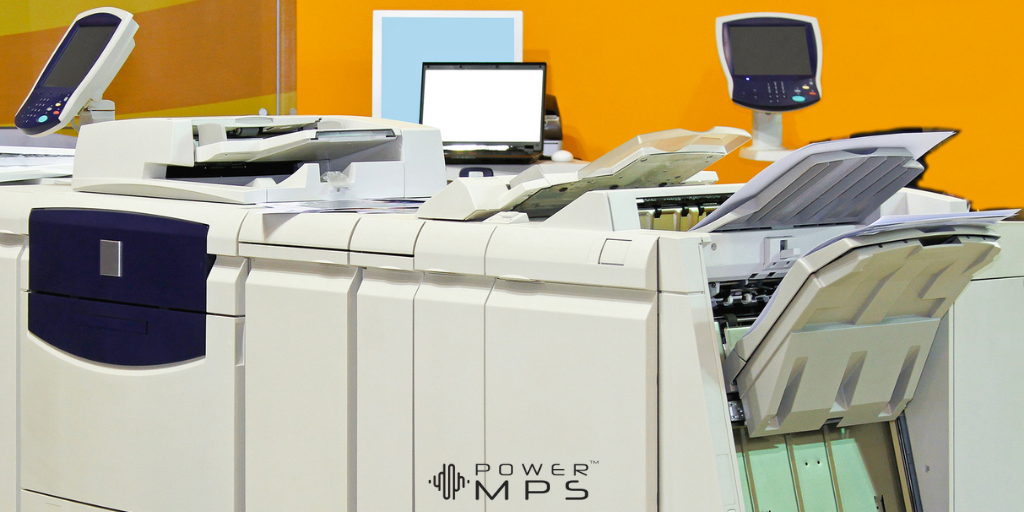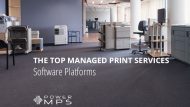The past few years’ events have turned the world of business from a digital-friendly environment into a digital-dependent one. Companies that previously housed their own servers and operated strict policies on equipment leaving the office are now contending with empirical evidence that their employees work just as diligently and securely at home.
But, despite communications becoming ever more digital, there is one-factor companies are finding to be even more surprising – employees’ continuing reliance on print. The typical employee still uses around 10,000 sheets of paper per year. That’s roughly 34 pages per day. Faced with the unanticipated demand for print, many businesses are looking to print solutions providers as a potential resource. Here are three things any company should consider before seeking out professional print solutions.
What are the business’s goals for print?
Every company has different intentions for making changes to their existing printing programs. And those business goals can directly influence the exact programs and types of printer service providers the company should pursue.
Some businesses, for instance, are looking to save money on their current printer configurations. Many print services providers offer programs that can achieve this goal. This may include providing better pricing or efficiency for printer ink or toner. It could also consolidate a multi-printer office by implementing a higher-function printer with larger print capacities. Or it could simply be eliminating the expense of IT time and efforts to keep printers up-to-date and operational.
But it’s not always about saving money. Printer service providers help offices become greener, track printer usage and assist in configuring programs to meet the needs of individual offices, departments, and employees. In addition, for businesses going hybrid, print services providers can offer monitoring, security, service, and supplies for multiple offices across the new company footprint.
What Are The Current Faults, Issues, And Risks?
 Understanding the exact problems caused by a current print setup is essential information to have before seeking a print solutions provider. Knowledge of exactly what is wrong will help any business determine the best printer partner and help that partner more quickly determine the best equipment and program to offer.
Understanding the exact problems caused by a current print setup is essential information to have before seeking a print solutions provider. Knowledge of exactly what is wrong will help any business determine the best printer partner and help that partner more quickly determine the best equipment and program to offer.
One of the most prominent print problems most companies face is with the printers themselves. This is especially true after the last couple of years as print specifically was considered secondary to simply facilitating continued business as quickly as possible. Unfortunately, that attitude now means quite a few companies are dealing with aging printers or machines that no longer fit current office needs.
A thorough evaluation of the machine(s) means noting how often they need to be loaded with paper, ink, or toner. How many times during a day does someone experience a paper jam? How long are print jobs spending in the printing queue? Perhaps most importantly, how much time does the equipment spend out-of-order or being serviced? All of these are significant problems to understand and address.
Security, especially in today’s political climate, is equally if not more concerning than general machine health. And, as with laptops and other connected equipment, printers that are not adequately secured with firewalls, white-listing, VPNs, and other security measures have proven to be a potential security risk. Therefore, evaluating the current security status and precautions is essential to understanding where printer security sits as an opportunity to improve.
Finally, how the company uses printing dramatically impacts the services that can improve business performance and control costs. Oversized machines for a small office that rarely prints are nearly as detrimental to a business as a company equipped with multiple printers, all of which cannot meet demand. Either situation is a risk of lost revenue. Unused machines will collect dust and debris that could impede proper functionality. On the other hand, smaller capacity machines in a print-heavy office may restrict production either through slower printing processes, excessive paper and toner changes, or additional breakdowns from wear and tear.
Research Options
Before reaching out immediately to a printer services provider, it may help to research and understand all the different office printer service options. Internally owned and operated printers, for instance, can still be a popular solution. This is especially appealing for businesses who are comfortable dedicating IT time and efforts to including printer operations.
Printer leasing is another viable option. This solution is especially appealing for companies that would prefer not to absorb the capital expense of one or more high-function printers. Even better, most printer leasing partners can bundle in service and maintenance agreements to help control the costs associated with ongoing cleaning and upkeep. These contracts are especially helpful as equipment ages since most printer leases include options to either purchase outright or upgrade to a newer machine once the lease runs out.
Businesses looking to go completely hand off managed print services (MPS) is the way to go. MPS partners flatten the expense, security, management, and maintenance of machines down to one manageable provider and monthly expenditure. They help pull all those printer-related help desk calls away from IT, too.
When it comes to finding an office printer solution, finding a reliable partner is a big step. Before jumping in with both feet, it is vital to research all the available options, understand the current issues and risks, and compare everything to the current business goals. Businesses that follow these three steps will be better prepared to make the best printer service decisions for their company’s future success.







